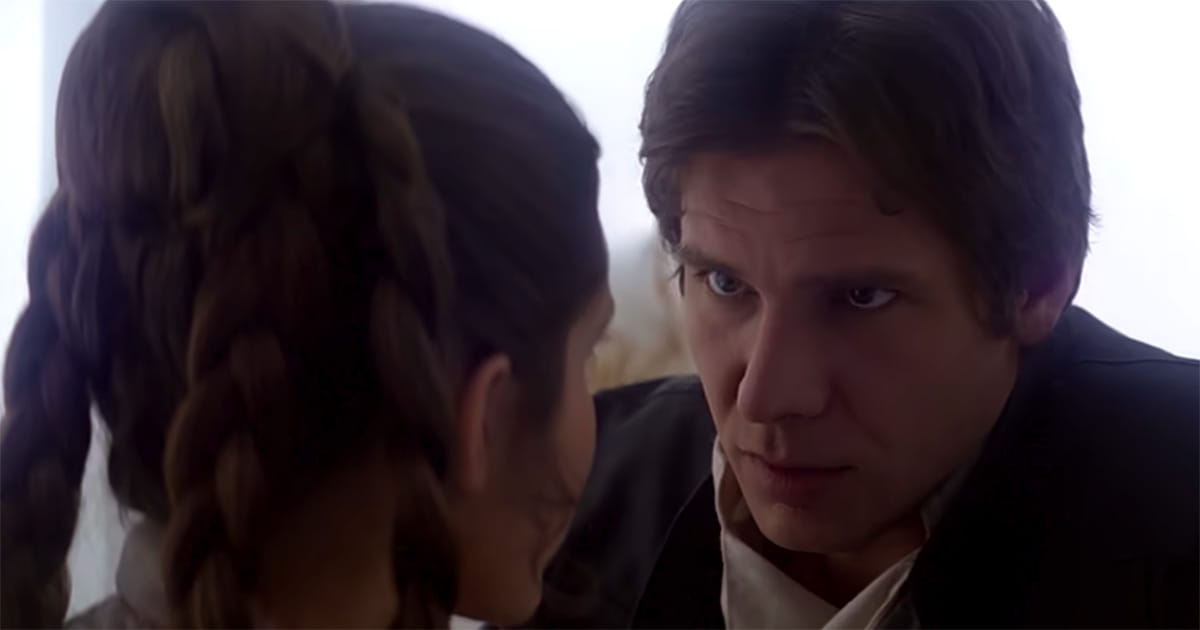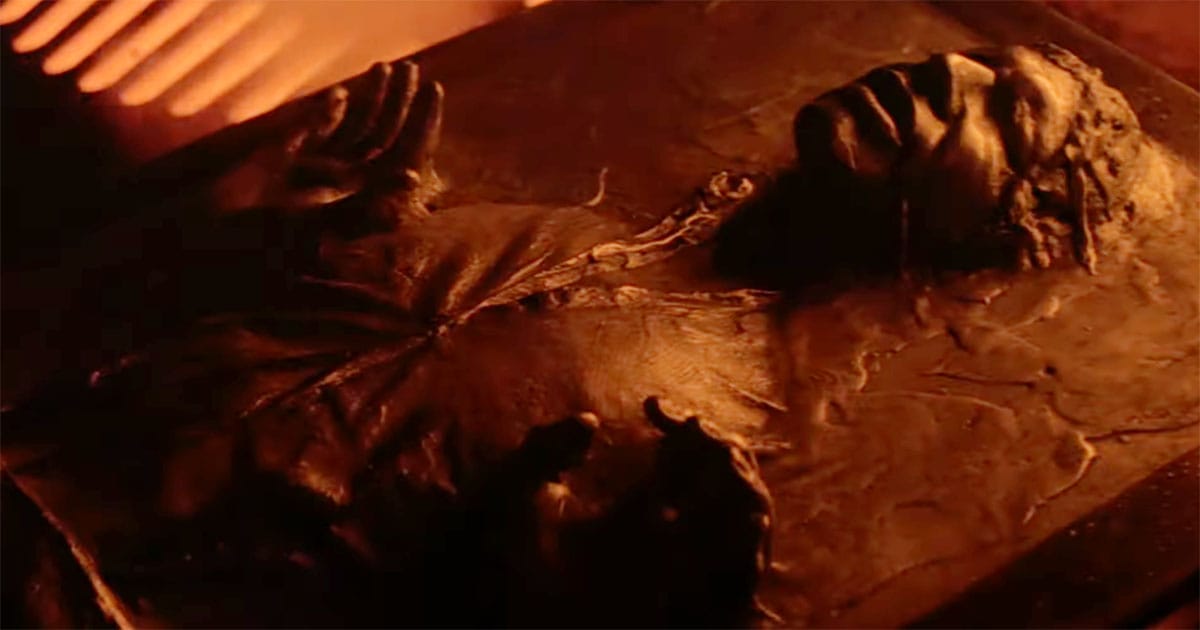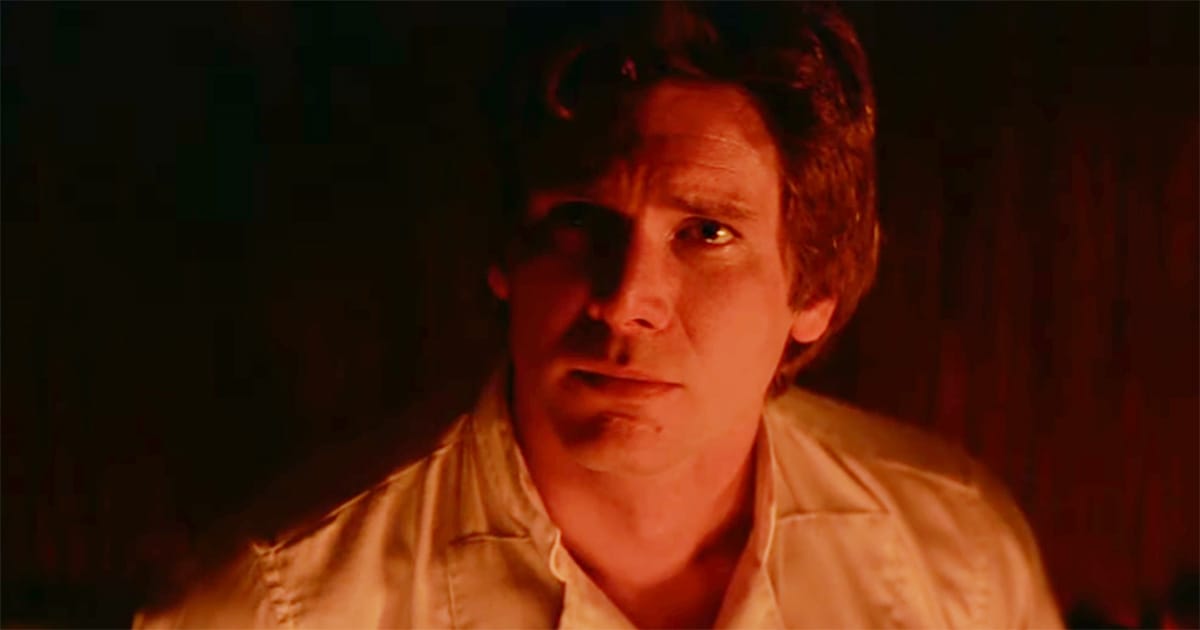Why “The Empire Strikes Back” Redeems Han Solo
Han Solo’s legend changes in “The Empire Strikes Back.” From the snows of Hoth to the shadows of Bespin, he becomes a leader defined by loyalty, courage, and the choice to stay when others flee.

Han Solo is often remembered as the man who never stopped smirking. His legend was built in "A New Hope," where he quipped his way through firefights and treated heroism as an accident. To many viewers, he remained the charming scoundrel who stumbled into greatness and walked away before it demanded anything lasting.
That impression lingers because the first film allowed him to keep one foot out the door. He fought for the Rebellion but never joined it, cared for his friends but never admitted it, and made every noble act look like a reluctant favor. The smuggler's independence defined him as the story's ungovernable spirit.

"The Empire Strikes Back" dismantles that image with precision. The film isolates Han in a world collapsing under the Empire's reach and the cold indifference of Hoth. There, instinct alone cannot save anyone. What emerges is a man who learns that leadership is not about running first but staying last.
By the time the Falcon escapes Echo Base, Han's reputation has already changed. He acts with a steady purpose that the first film only hinted at. "Empire" is less about his rebellion against authority than about his acceptance of responsibility —a far more dangerous test of character.
Hoth Leadership
The turning point for Han begins on the frozen plains of Hoth. When he learns that Luke has not returned from patrol, he does not hesitate to go after him. The decision comes without bravado or argument, a clear contrast to the man who once demanded payment before helping anyone. Riding alone into a deadly storm marks his first true act of command.
Inside Echo Base, his authority becomes practical rather than ornamental. Han is not part of the Rebellion's hierarchy, yet others follow his lead when he speaks. He directs mechanics, coordinates escape procedures, and makes decisions grounded in survival rather than ego. These moments reveal a soldier's discipline emerging beneath the swagger of a smuggler.

This shift is crucial because it reframes courage as endurance rather than impulse. Han's return with the half-frozen Luke is not an act of luck but of preparation and resolve. The audience witnesses a man who shoulders responsibility without waiting for acknowledgment.
On Hoth, the myth of the reckless pilot begins to fall away. Han becomes a stabilizing force amid chaos, guiding others rather than escaping first. The hero who once ran from causes now anchors one, proving that leadership can come from instinct sharpened by loyalty.
The Falcon Under Fire
The escape from Hoth pushes Han into a new kind of trial. Once the Falcon takes to the air, he faces a running battle that demands more than mere daring. Every decision must balance risk against the safety of his crew, and his first concern is always Leia. This is not the self-serving pilot from Mos Eisley but a commander whose instincts are tuned to others.
In the asteroid field, his improvisation becomes a study in controlled audacity. Han calculates each maneuver with precision, shielding Leia and the others through instinct and skill. The famed chase scene may look reckless, but it is built on judgment, not gambling. His confidence now protects rather than endangers.
The Falcon's breakdowns reveal another layer of his growth. Instead of cursing his ship or blaming fate, Han works tirelessly to keep her flying. His mechanical focus and calm under fire show a man who takes responsibility for every life aboard. The cockpit becomes his command bridge, and every repair is a promise to those who trust him.
Through these moments, "The Empire Strikes Back" transforms the Falcon from a smuggler's vessel into a lifeboat of leadership. Han's swagger remains, but it now conceals purpose rather than deflection.
Bespin and the Moral Pivot
By the time Han reaches Bespin, his transformation is nearly complete. Every choice he makes there reveals a man who values his companions above his own survival. Trusting Lando is not a gambler's whim but a calculated decision made under duress. The risk is necessary because his first duty is to Leia and the others, not to himself.
When the Empire takes control of Cloud City, Han's courage becomes quiet and deliberate. He endures torture meant to break him without betraying his friends or their cause. Gone is the mercenary who once negotiated for his safety before joining a fight. What remains is a man who meets pain with discipline, refusing to shift the cost of danger onto anyone else.

The carbonite chamber seals that evolution. His final moments before freezing are defined by composure rather than fear. He steadies Leia with confidence rather than desperation, turning the phrase "I know" into a gesture of reassurance rather than arrogance. The scene captures maturity in its purest form—acceptance of fate without surrender of spirit.
On Bespin, Han's legend turns inward. The swaggering pilot becomes the story's moral center, proving that true heroism often arrives without triumph, in the silence between action and consequence.
Reputation Corrected
When the credits roll on "The Empire Strikes Back," Han Solo is no longer the smuggler who stumbled into heroism. He is the anchor of a fractured alliance, the man whose steadiness holds the group together when everything else collapses. His growth is not marked by victory but by acceptance of duty. The film transforms his cynicism into conviction.
The scoundrel's reputation lingers because Han hides his integrity behind humor. Yet "Empire" makes it clear that his charm now serves others more than himself. His leadership on Hoth, his calm in the asteroid field, and his sacrifice on Bespin reveal a moral compass that needs no proclamation. The man who once claimed not to believe in causes has become the one others depend upon without question.

This evolution gives "The Empire Strikes Back" its emotional balance. Amid betrayal, loss, and uncertainty, Han's choices demonstrate that courage is not about winning but staying when retreat seems easier. His steadiness grounds the film's darkness, giving it humanity.
To watch "Empire" again with this in mind is to see not the rogue who refused to grow up, but the leader who did. Han Solo's legend may have begun with rebellion, but it endures because of responsibility earned in the cold light of Hoth and the shadows of Bespin.

